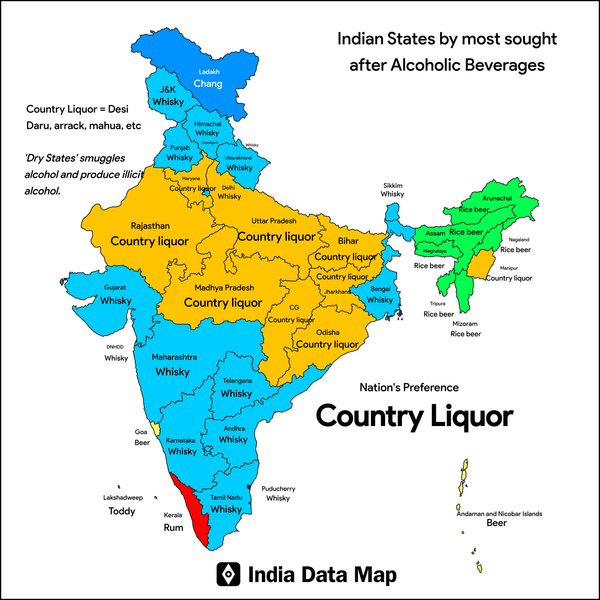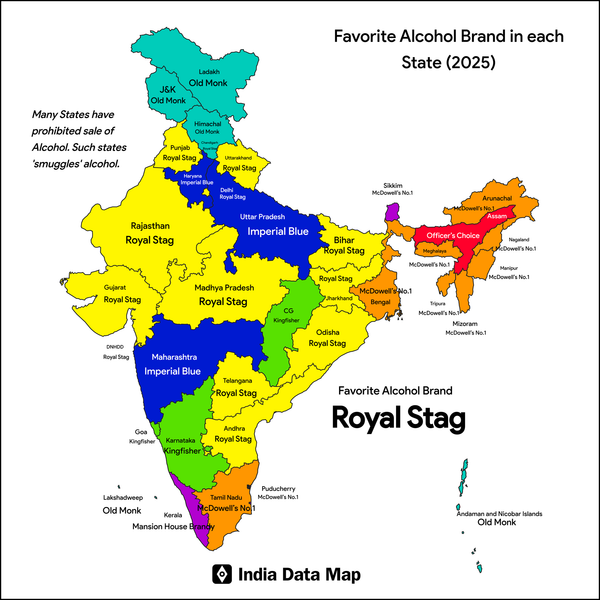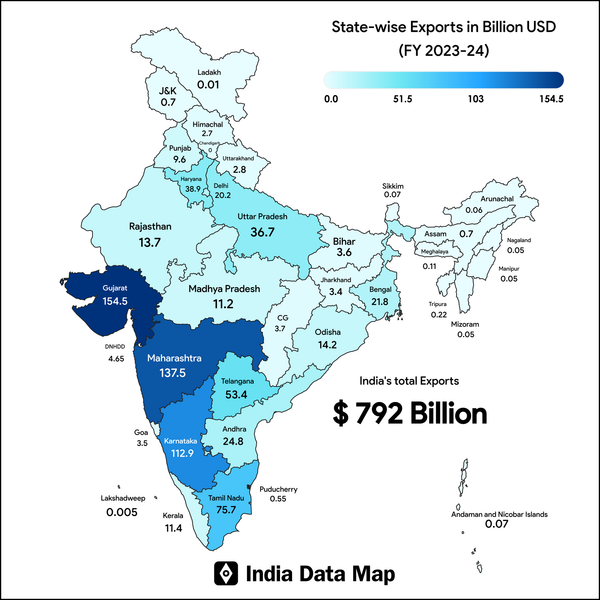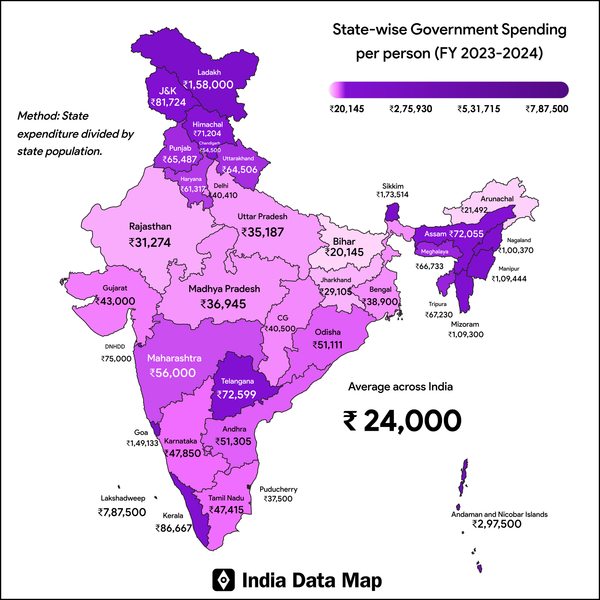Map: Indian States by Excise Duty Collection (FY 2023-24)
State-wise excise duty collection in India for FY 2023-24. See top and lowest earning states, trends, and surprising insights in one table.
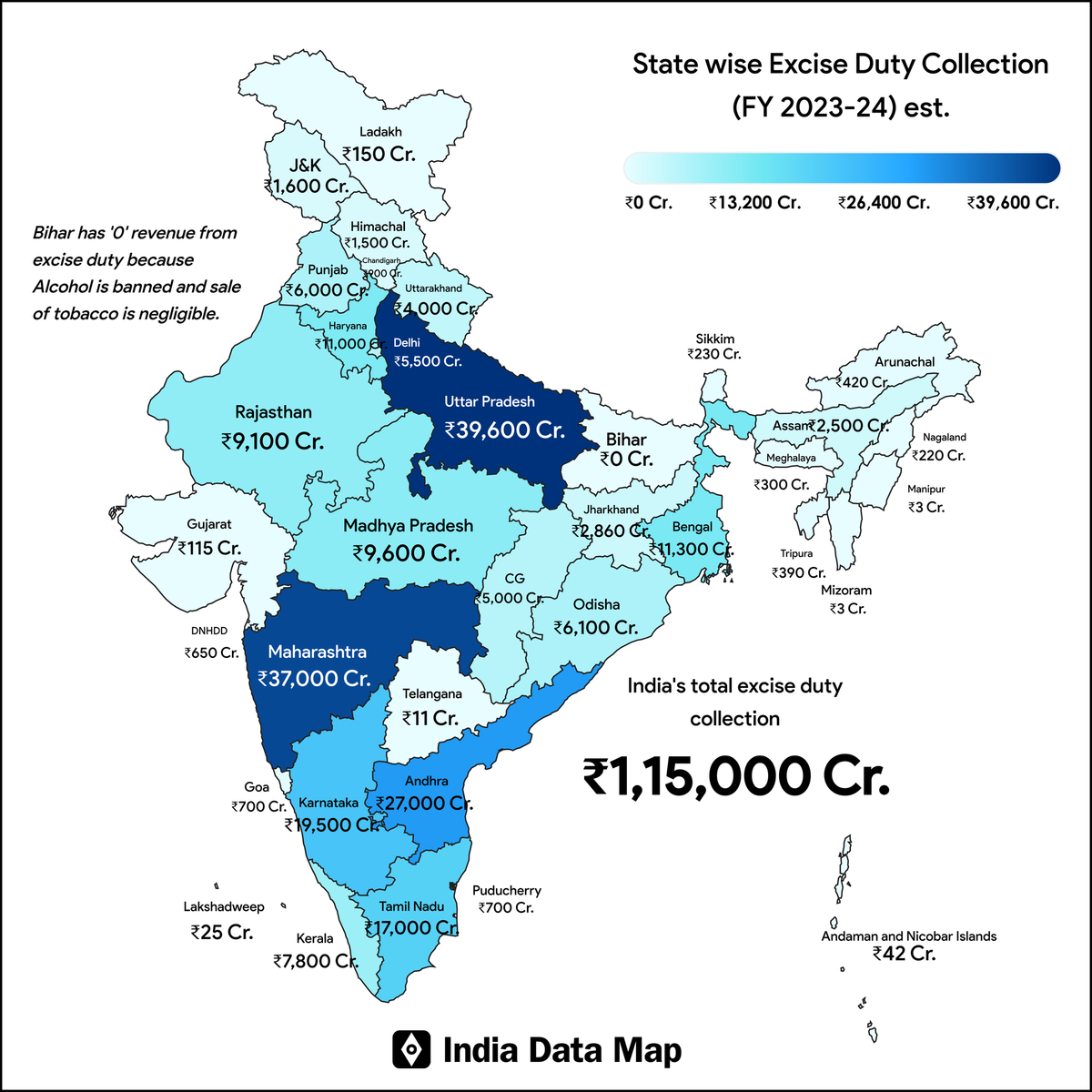
Excise duty, particularly on liquor, continues to be a critical revenue stream for Indian states. In FY 2023-24, excise collections showcased interesting regional trends, reflecting both consumption patterns and policy approaches across India.
India: State-wise Excise Duty Collection (FY 2023-24)
| State / Union Territory | Estimated Excise Duty (₹ crore) |
|---|---|
| Uttar Pradesh | ~39,600 |
| Maharashtra | ~37,000 |
| Andhra Pradesh | ~27,000 |
| Karnataka | ~19,500 |
| Tamil Nadu | ~17,000 |
| West Bengal | ~11,300 |
| Haryana | ~11,000 |
| Madhya Pradesh | ~9,600 |
| Rajasthan | ~9,100 |
| Kerala | ~7,800 |
| Odisha | ~6,100 |
| Punjab | ~6,000 |
| Delhi (UT) | ~5,500 |
| Chhattisgarh | ~5,000 |
| Uttarakhand | ~4,000 |
| Jharkhand | ~2,860 |
| Assam | ~2,500 |
| Jammu & Kashmir (UT) | ~1,600 |
| Himachal Pradesh | ~1,500 |
| Chandigarh (UT) | ~900 |
| Puducherry (UT) | ~700 |
| Goa | ~700 |
| Dadra & Nagar Haveli & Daman & Diu (UT) | ~650 |
| Arunachal Pradesh | ~420 |
| Tripura | ~390 |
| Meghalaya | ~300 |
| Sikkim | ~230 |
| Nagaland | ~220 |
| Ladakh (UT) | ~150 |
| Gujarat | ~115 |
| Lakshadweep (UT) | ~25 |
| Telangana | ~11 |
| Mizoram | ~3 |
| Manipur | ~3 |
| Bihar | ~0 |
Top Performers
Uttar Pradesh leads the country with an estimated excise collection of ₹39,600 crore, followed closely by Maharashtra at ₹37,000 crore. These two states consistently dominate due to their large populations and high alcohol consumption levels. Andhra Pradesh also stands out with an impressive ₹27,000 crore, underlining its dependence on liquor sales as a major revenue source.
Karnataka and Tamil Nadu follow, generating ₹19,500 crore and ₹17,000 crore respectively. Both states maintain strong state-run liquor retail models, which help maximize excise revenues.
Mid-Range Contributors
States like West Bengal (₹11,300 crore), Haryana (₹11,000 crore), and Madhya Pradesh (₹9,600 crore) make up the next tier. Rajasthan, Kerala, Odisha, and Punjab also contribute significantly, each surpassing ₹6,000 crore. Delhi, despite being a Union Territory, collected an impressive ₹5,500 crore, driven by high urban consumption.
Low Collectors & Special Cases
Several smaller states and Union Territories have minimal excise revenues due to lower populations and more conservative alcohol policies. Examples include Mizoram (₹3 crore), Manipur (₹3 crore), and Nagaland (₹220 crore). Gujarat and Bihar almost entirely forgo excise revenue from liquor (₹115 crore and ₹0, respectively) because of state-level prohibition policies.
Lakshadweep and Ladakh, given their tiny populations and remote geographies, contribute negligible amounts — ₹25 crore and ₹150 crore, respectively.
Key Takeaways
- Alcohol excise duty remains outside GST, making it one of the few major taxes fully controlled by states.
- States with prohibition policies, like Bihar and Gujarat, sacrifice this lucrative revenue source, relying more heavily on other taxes and grants.
- High excise collections often align with states operating government-controlled liquor retail systems (e.g., Tamil Nadu, Karnataka).
- Urban territories like Delhi generate substantial excise revenue despite smaller geographical sizes.
Final Thoughts
Overall, state excise duty continues to highlight the economic importance of alcohol taxation in India’s fiscal structure. The differences across states not only reflect varying consumption habits but also underline how policy choices directly impact state finances.
Sources
- Economic Survey of India 2023-24 (Ministry of Finance) - https://www.indiabudget.gov.in/economicsurvey/

